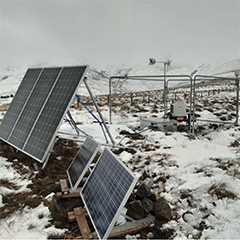Lidar wind measurement campaigns can offer a number of key benefits over a traditional met mast approach to wind resource assessment in the development of wind farms. As always, to get the best data solution it’s important to take a few simple steps. Here are our top tips.
In many respects Lidar can represent an improvement on traditional met masts within wind energy applications such as pre-construction energy yield assessments. Logistically, they can be rapidly deployed, don’t require any major ground works or foundations and offer a significant reduction in health and safety challenges. With the technology now mature, data produced by Lidar measurements are as accurate and bankable as a conventional meteorological wind measurements mast and can meet the requirements that the industry demands.
Lidars also present an opportunity to define wind characteristics well above the height of a conventional met mast, providing wind data across the full wind turbine rotor diameter of today’s and indeed tomorrow’s wind turbines. With the opportunity to easily and quickly relocate and micro-site Lidars throughout the proposed wind development site and the ability to accurately measure wind data from ground level to an elevation of more than 200 metres, Lidars can provide an unprecedented degree of flexibility. This gives a better understanding of the wind resource throughout the site, with a corresponding reduction in the vertical shear uncertainty and the horizontal spatial variation uncertainty.
A few simple steps can get the absolute best from this new standard in measurement technology.






























